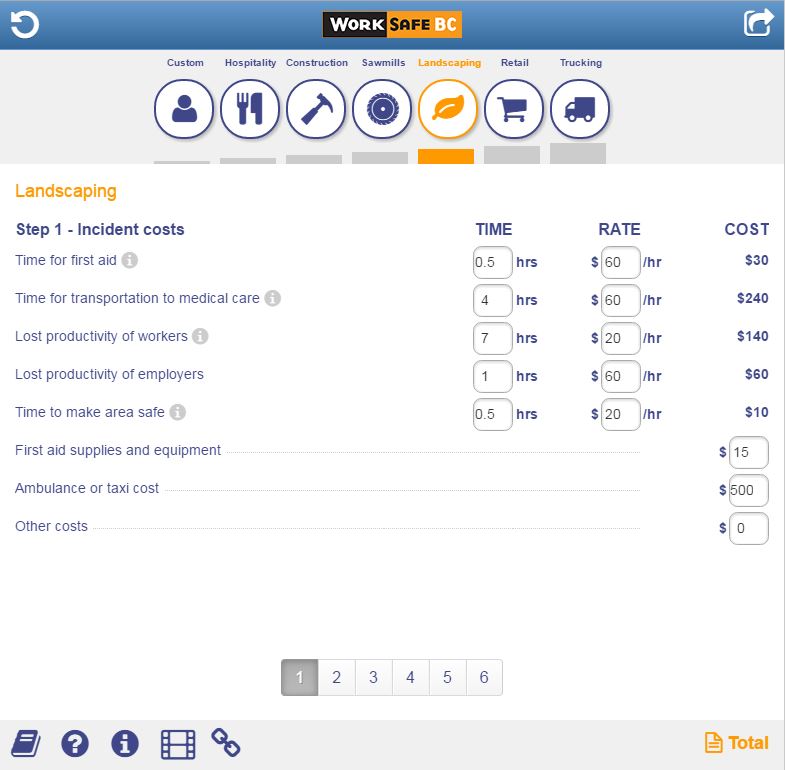Insight
Published and updated
6 Costs of a Safety Shutdown
Incidents happen. So do incident investigations. But the costs associated with a safety shutdown depend on your response profile, safety culture, and the severity of the incident. Let’s take a look at six types of costs associated with an unexpected safety shutdown.
Why Initiate a Safety Shutdown?
A safety shutdown typically results from one of three scenarios: an accident, a citation, or an inspection failure. Accidents are the most costly because of the additional medical, training, and legal costs on top of equipment damage and loss of productivity.
Citations include the cost of the citation plus the extra time (and lost productivity) for regulatory authorities to confirm that the incident area is safe again.
Inspection failures should, in theory, be the least costly reason for a safety shutdown. If you’re proactive and have a predictive maintenance program in place, then you have a better chance of minimizing incidents before they become expensive disruptions—for workers, equipment, and productivity.
6 Costs of a Safety Shutdown
We’ve carved safety shutdown costs into six categories. Specific costs exist within each, and most of these appear in the excellent Workplace Incident Cost Calculator developed by WorkSafeBC.

- Incident: For accidents, costs mount up for medical care, loss of productivity, and making the area safe again. For citations, you have the costs of the citation itself, time lost during shutdown, and the fees charged by regulatory agencies to oversee remediation. For inspection failures, you only have to factor in the cost of time lost during shutdown.
- Investigation: It costs time to complete reports, submit paperwork, perform the actual investigation, and to discuss the incident with workers.
- Damage: Not only are you spending on replacement parts, equipment, and lost product, you’re also paying for cleanup, disposal of damaged equipment, and time and labor to assess, coordinate, and repair or replace the damaged equipment.
- Training a new worker: If a worker is injured and is unable to return to work for an extended period, then you’ll need to backfill that worker’s role. It costs time to find the new worker and get him or her up to speed. Your experienced workers will also lose time training the new employee.
- Productivity: During a shutdown, no one is working. Even if the incident is contained so that only part of the shop floor, plant or jobsite is shut down, you still lose valuable productive work hours. In the case of an injury, you also suffer productivity loss from managing the injury claim and a likely drop off when the injured employee returns to work.
- Reputation: This one is difficult to quantify. If safety shutdowns happen regularly, then word will spread that you have a hazardous work environment. And not just around the working community, either. If regulatory agencies detect a pattern of safety shutdowns, that could land your business in permanent shutdown.
Recouping Your Safety Shutdown Losses
Accounting for all six costs of a safety shutdown can be intimidating. But trying to regain the revenue lost due to lower productivity and the costs of repairing or replacing equipment can seem impossible. An incident lasts mere moments compared to the days, weeks or even months it can take to recover from one.
So how do you avoid incidents? Let’s be realistic: You won’t avoid 100 percent of them, but you do have more control than you might think.
Taking a proactive approach with predictive maintenance programs will help limit equipment downtime. Ironically, another effective approach to limiting safety shutdown costs is—wait for it—a shutdown. The shutdown in this case, however, is planned as part of a preventive maintenance schedule or the installation of new equipment.
Another proactive measure is to commit to a safety culture. According to OSHA, “A company with a strong safety culture typically experiences few at-risk behaviors, consequently they also experience low incident rates, low turnover, low absenteeism, and high productivity.”
Maybe the best way to look at is this: Rather than worry about recouping safety shutdown losses, instill a safety culture to help prevent safety shutdowns and limit losses.